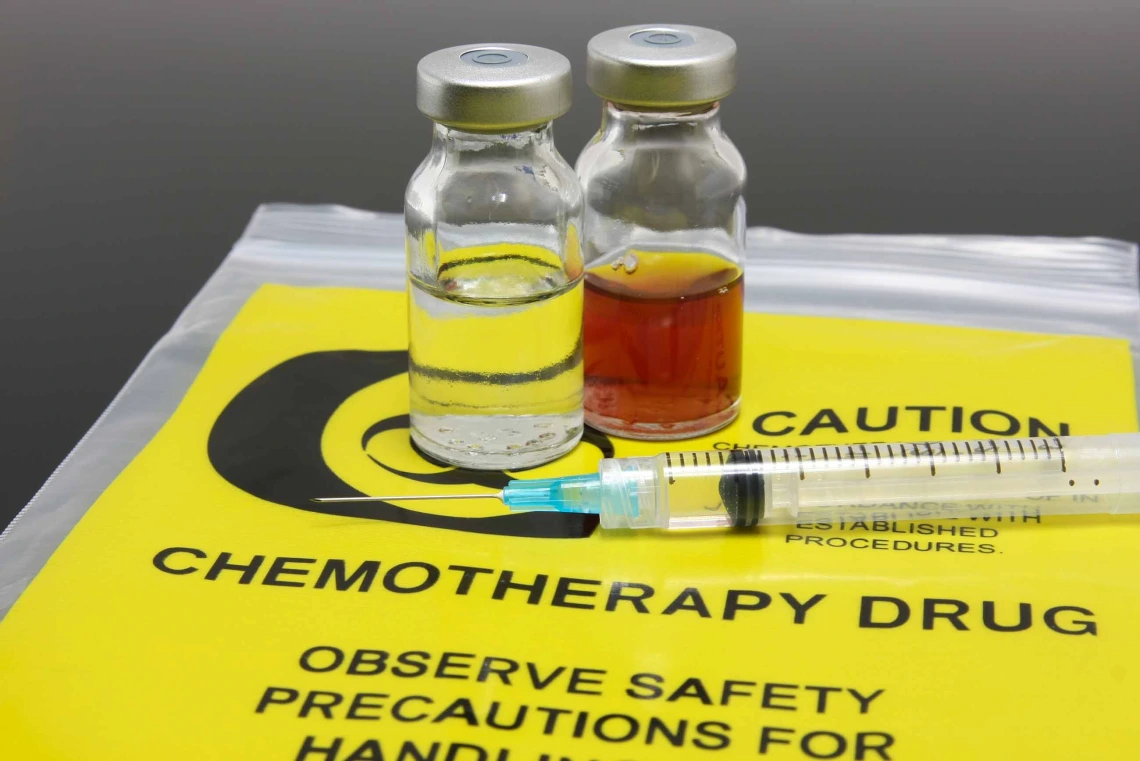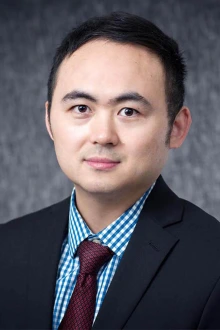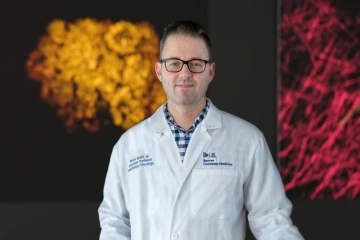Repackaged cancer drug boosts delivery to tumors, improves combination therapies
Researchers modified the chemotherapy drug paclitaxel to more effectively target breast and pancreatic cancer tumors in mouse models.

Photo by fluxfoto via Getty Images
University of Arizona researchers devised a new method to deliver cancer chemotherapy drugs to pancreatic and breast cancer tumors more effectively and with less damage to healthy tissues than standard forms of chemotherapy. The paper was published today in Nature Cancer.

Jianqin Lu, PhD, is the John A. and Frances P. Ware endowed associate professor in the U of A R. Ken Coit College of Pharmacy.
Photo courtesy of Wen Jiang, PhD
The research team’s new formulation of the drug paclitaxel may help overcome some common limitations of chemotherapy drugs, setting the stage for a promising new platform for treating cancer and other diseases.
“Paclitaxel is potent and kills cancer cells, but to unleash its full therapeutic potential, we have to address its toxicity,” said Jianqin Lu, PhD, the John A. and Frances P. Ware endowed associate professor in the U of A R. Ken Coit College of Pharmacy and a member of the U of A Comprehensive Cancer Center. “That means finding a better way to get it to tumor cells while also making it stay around longer. This platform is based on a technology that modified the drug to better reach and penetrate tumors, improving drug delivery while also reducing side effects.”
Paclitaxel, a mainstay of cancer chemotherapy, is used to treat a wide range of cancers, including breast, pancreatic, lung and ovarian. But it has downsides, including often going to unwanted places like the liver and spleen.
The new delivery method takes advantage of the unique properties of tiny, fatty bubbles called nanovesicles. A nanovesicle is a form of nanoparticle, which scientists often use in drug delivery. Lu’s team chemically attached paclitaxel to sphingomyelin, a type of fat found in cell membranes, forming a nanovesicle.
Such structures enable the drug to “have better tumor delivery and stay in circulation longer, accumulating in the tumor site and less so into healthy tissue,” Lu noted.
The new formulation, called Paclitaxome, outperformed the chemotherapy drugs Taxol and Abraxane – also forms of paclitaxel – in tests against triple-negative breast cancer and advanced pancreatic cancer in mice. The researchers subsequently made additional modifications, engineering an improved paclitaxel formulation that resulted in reduced tumor growth and longer survival.
“Many chemotherapy drugs have poor delivery,” noted study co-author and oncologist Aaron Scott, MD, an associate professor of medicine at the U of A College of Medicine – Tucson and director of the early therapeutics program at the Cancer Center. “Paclitaxome is clinically promising because the system delivers the drug at the tumor site and will prevent side effects. The drug isn’t cleared from the system as quickly. All of this improves its efficacy.”
The modified paclitaxel also improved the delivery of drug combinations to tumors. The researchers tested the combination of paclitaxel and gemcitabine by inserting gemcitabine inside the nanovesicle core.

Aaron Scott, MD, is an associate professor of medicine at the U of A College of Medicine – Tucson.
Photo by Kris Hanning, U of A Office of Research and Partnerships
“We screened different drug ratios and then loaded the best one into the nanovesicle,” said Lu, who is also a member of the university’s BIO5 Institute. “The combination outperformed the co-administration of gemcitabine plus Taxol as well as the combination of Abraxane and gemcitabine.”
In another test, they combined the modified paclitaxel and the drug carboplatin to prevent triple-negative breast cancer in mice from recurring while also eliminating disease that had spread elsewhere.
“This strategy can be applied to other drugs and also other diseases,” Lu said. “We applied this nanovesicle strategy to another chemotherapy drug, camptothecin, and it worked well in a colon cancer mouse model. That demonstrated the generalizability of this technology to an array of drugs.”
Lu thinks that the same approach could be used to deliver chemotherapy drugs together with immunotherapies, which attempt to harness the immune system against cancer. His team is working to gather more preclinical data and better understand the platform’s applications.
“Our goal is the take this into first-in-human clinical trials,” Scott said. “This platform can span a variety of tumor types for patients who desperately need better therapies.”
Additional co-authors from the Coit College of Pharmacy include first author Zhiren Wang, PhD, now a professor at the South China University of Technology, Wenpan Li, PhD, a scientist in the Department of Pharmacology and Toxicology, and graduate students Yanhao Jiang, Mengwen Li, and Shuang Wu, and Teng Ma, PhD, Tuyen Ba Tran, and Leyla Estrella Cordova. Other U of A co-authors include Jennifer Erdrich, MD, assistant professor of surgery in the College of Medicine - Tucson, Joyce Schroeder, PhD, professor of molecular and cellular biology in the U of A College of Science and BIO5 Institute member, and undergraduate student Ethan Lin in the U of A College of Engineering.
This work was supported in part by the National Institute of General Medical Sciences under award number R35GM147002 and the National Cancer Institute under award numbers R01CA272487 and K08CA276137. NIGMS and NCI are both divisions of the National Institutes of Health.
Experts
Jianqin Lu, PhD
John A. and Frances P. Ware Endowed Associate Professor, Department of Pharmaceutical Sciences, R. Ken Coit College of Pharmacy
Director, Pharmaceutics and Pharmacokinetics Track, Coit College of Pharmacy
Member, Clinical and Translational Oncology Program, U of A Comprehensive Cancer Center
Member, Southwest Environmental Health Sciences Center, Coit College of Pharmacy
Member, BIO5 Institute
Aaron Scott, MD
Associate Professor, Department of Medicine, College of Medicine – Tucson
Director, Early Therapeutics Program, U of A Comprehensive Cancer Center

